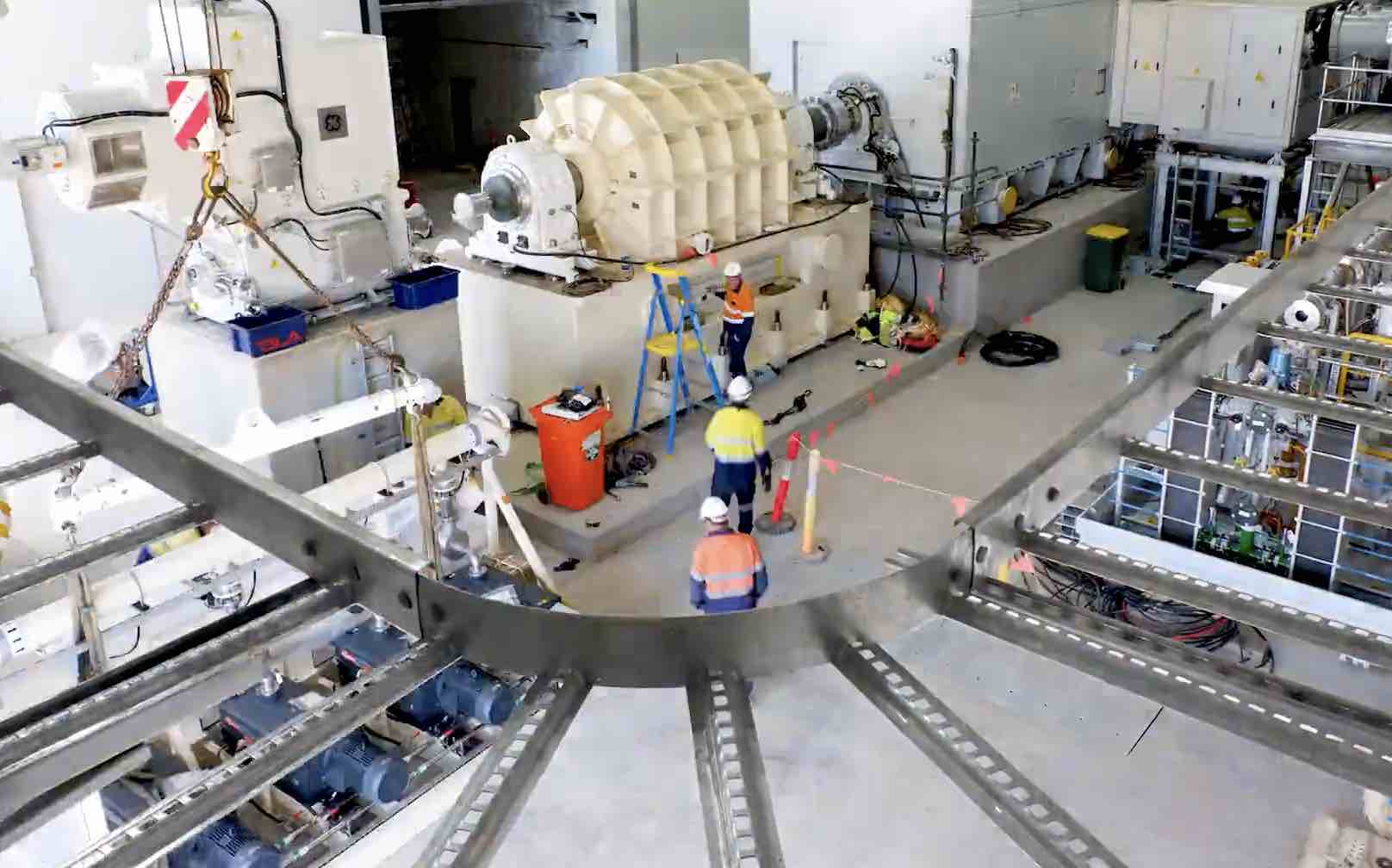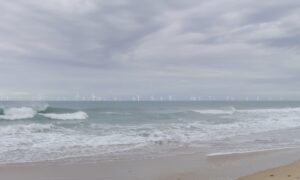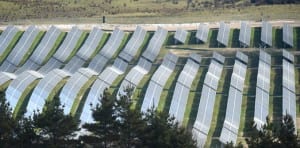The limits on large scale renewables in what is already the world’s leading grid for wind and solar are to be relaxed after the local transmission company completed the installation of four big “spinning machines” that will help remove the need for gas generation.
The spinning machines, known as synchronous condensers, are designed to provide “system strength” and adjust technical conditions on the electric power system. They don’t burn any fuel.
Four syncons have been installed – two at Robertstown north of Adelaide where a new transmission link to NSW will start, and two at Davenport near Port Augusta, where a number of massive wind and solar farms have already replaced the state’s last coal generators that closed more than five years ago.
The addition of the syncons means that gas generators may still be needed when there is not enough wind or solar to meet energy demand, but the amount of gas generation needed to maintain grid security will be significantly reduced.
This means that the Australian Energy Market Operator will have to rarely intervene in the market and order gas generators to begin production, even if the price is low.
It also means that the limits imposed on wind and solar output will also be relaxed, with up to 2,500MW now allowed in certain conditions. The previous limit had been around 1,700MW.
Despite those limits, wind and solar delivered around 62 per cent of the state’s electricity demand over the last 12 months, and this share is likely to jump as the restraints are relaxed and as new projects, such as the 317MW Port Augusta renewable energy park – combining wind and solar – begin production.
See also today’s story: Solar meets more than 100 per cent of local demand in South Australia again
The state government has a target of reaching “net 100 per cent renewables” by 2030, but most experts say this will likely be achieved well before then.
Steve Masters, the CEO of transmission company ElectraNet, says the addition of the syncons means that costly interventions by AEMO – which amounted to $34 million in the last 12 months alone – will be significantly reduced.
“With the synchronous condensers now in operation, costly AEMO directions can be avoided meaning South Australian residential customers will be saving $3 to $5 per year on a ‘typical’ bill.
The syncons are relatively old technology. Masters notes that each weighs more than 170 tonnes, is eight metres long and is five meters tall.
The work undertaken to install them into our transmission network cannot be underestimated and I thank the project team and contractors who delivered this work.”
Many systems engineers think that the use of syncons will be limited, and that batteries operating in “virtual synchronous” mode will be able to deliver many if not all of the same grid services.
Some batteries are already trialling this service.
Over the last few years, many wind and solar farms in the main grid were obliged by the so-called “do no harm” rules to install their own syncons, at great cost, nominally to maintain grid security.
But transmission companies such as Transgrid pointed out that this haphazard installation was likely making things worse, and called for a change of rules.
These were finally approved last week and means that any new syncons will be installed on a co-ordinated basis by transmission companies, rather than individual developers.








